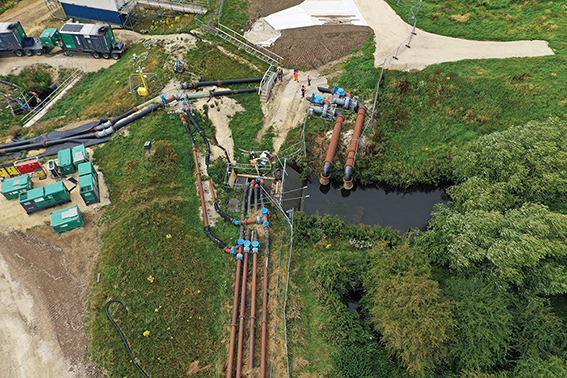Background
As a specialist in engineering schemes in the water and construction industries, JBA Bentley’s teams called on Selwood’s Pumping Solutions team to help with a project which involved the total refurbishment of the Environment Agency’s pumping station in Doncaster. The aim was to increase the station’s storm pumping capacity to help reduce flooding in the area.
The challenge
The works required that all existing flows to the station be bypassed around the site so that the refurbishment could be completed, and flood risks managed for the duration of the works.
Selwood worked with the main contractor and the client to design a system that would meet these challenges.
The immediate issue was to provide a system that coped with the normal flows through the drainage network to the station. The usual flows were 2m3/sec, with a further 2m3/sec to be allowed for in the event of a storm.
In extreme conditions it was agreed that site could potentially flood, so extra measures were considered to allow the overpumping electrical system to be sited at a level where no amount of storm flow could inhibit the operation. This was achieved by placing all the control equipment in containers and setting the unit at a raised height above the one in a 1000-year storm event level.
The solution
The drainage through network flow of 2m/sec was managed by four 350mm Flygt submersible pumps operating in a duty/assist/assist/assist setting. These pumps were connected in pairs of two into two lines of 700mm HDPE lines that ran approximately 461 linear meters from the point of collection to the discharge bypassing site.
The storm system providing a further 2m3/sec was managed by using two 500mm Flygt Submersible pumps converted into a hybrid end suction system which could be operate submersed in storm conditions. These flows were pumped into designated flood plains which could then be drained back to the river using further submersible drainage systems on site.
The system took four weeks to install and commission and drew on the skills of the main contractor and Selwood who worked together to meet the time frame and challenges. A specialist electrical sub-contractor was selected by the main contractor to fit the electrical control panels into a 24ft container to set the system up almost as if it was a permanent solution. Visibility of the system was then provided to the client in order that they could use the temporary solution as part of their national asset base.
The result
The period of the planned works was approximately 18 months, and other equipment was added to this during the works when needed to ensure the project stayed on time and provided the correct protection from flooding during the works construction phase. The system worked through this period, providing cover for the duration of the works. The project was delivered to the client successfully and within the planned time frames.
www.selwood.co.uk



